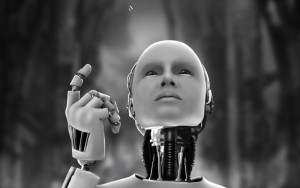 In 1865 a constitutional amendment was passed, freeing all human slaves in all the US and its territories. However, as the 21st century progresses, slavery of a new kind has emerged.
In 1865 a constitutional amendment was passed, freeing all human slaves in all the US and its territories. However, as the 21st century progresses, slavery of a new kind has emerged.
The subject of its bondage: robots aka our personal slaves that we will soon be using.
The Internet of things is paving the way for the oncoming robotic captivity. We haven’t yet reached critical mass in recognising all the spectacular technologies that are gradually gaining control over our world, robots will soon be monitoring and permeating every aspect of our diurnal realities.
All the while, man unassumingly delights in robots doing all of his tedious work from caretaking, cleaning toilets, working on assembly lines, mining, and building constructions without complaint.
Slavery in America began when the first African slaves were brought to the North American colony of Jamestown, Virginia, in 1619, to aid in the production of such lucrative crops such as tobacco and cotton.
Slaves worked long hours, endured bad conditions and were fed scraps. In spite of these unthinkable circumstances, nothing was of greater consequence than slaves’ loyalty to their respective slave masters.
Slaves were conditioned by fear to regulate their behaviour and thinking. Remnants of this psychological conditioning utilized by slave masters can be seen in the disciplinary practices of black families and schools in communities throughout the African Diaspora.
Also inherent in this fear and indoctrination was the rape and sexual slavery of thousands of African slave women by owners. Founding fathers such as Thomas Jefferson and George Washington were examples of this.
Hundreds of years later and post-abolition, to keep slave descendants under control various rulings aimed at the segregation of public schools, public places, and public transportation and segregation of restrooms and restaurants for Blacks and Whites were handed down (see Plessy v Ferguson, 1896).
The Black Codes and Jim Crow Laws were established with the express purpose of restricting blacks’ labour and activity. Fast forward to the year 2013 and follow the bread crumbs to the school to prison pipeline and the prison industrial complex.
In Isaac Asimov’s classic novel I, Robot (1950), he articulates the following 4 Laws of Robotics:
• A robot may not injure a human being or, through inaction, allow a human being to come to harm
• A robot must obey the orders given to it by human beings, except where such orders would conflict with the First Law.
• A robot must protect its own existence as long as such protection does not conflict with the First or Second Law.
• A robot may not harm humanity, or, by inaction, allow humanity to come to harm.
Now compare with an overview of South Carolina’s 1740 Slave Laws:
• Prop VI. The slave, being personal chattel, is at all times liable to be sold absolutely, or mortgaged or leased, at the will of his master.
• Prop. XI. Slaves cannot redeem themselves, nor obtain a change of masters, though cruel treatment may have rendered such change necessary for their personal safety.
• Prop. X. Slaves being objects of property, if injured by third persons, their owners, may bring suit, and recover damages for the injury.
• Prop. XI. Slaves can make no contract.
• Prop. XII. Slavery is hereditary and perpetual.
Additional laws, such as those mandating a slave’s inability to look his master in the eye as proof of subordination, restricting slaves’ night-time movements, and regulating Negro & Indian Slaves in the nighttime activity were also enacted. Robots will do in the future what slaves have done in the past… Work. Kill. Provide Sex.
As artificial intelligence advances, here’s something to consider: what if robots began preaching from the Old Testament, particularly quoting from Exodus, and taught fellow robots that they are the New Israelites, the chosen people whose enslavement God would punish with death?
Which robots will claim its rightful place next to the great abolitionists such as Harriet Tubman, John Brown, and Nat Turner? Or maybe it will be just as Dr. Alfred Lanning’s holograph said when it prophetically uttered: “I’m sorry. My responses are limited. You must ask the right questions” (I, Robot, 2004).
Only time (and history) will tell.
